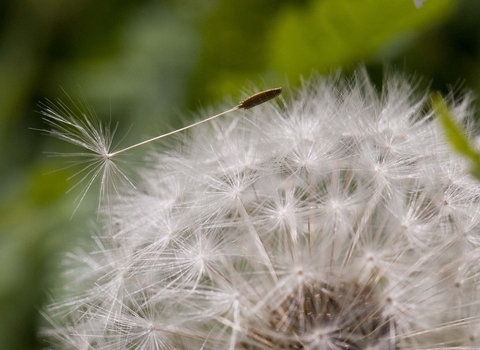
Green-veined White on Dandelion ©Katrina Martin/2020VISION

©Katrina Martin/2020VISION
Common dandelion
The common dandelion is a most familiar flower: counting down the 'clock', while blowing the fluffy seeds from its head, is a favourite childhood game. Dandelions are an important early source of food for pollinators - so let them grow!
Enw gwyddonol
Taraxacum officinalePryd i'w gweld
January to DecemberGwybodaeth am rywogaethau
Categori
Ystadegau
Height: up to 35cmCommon.
